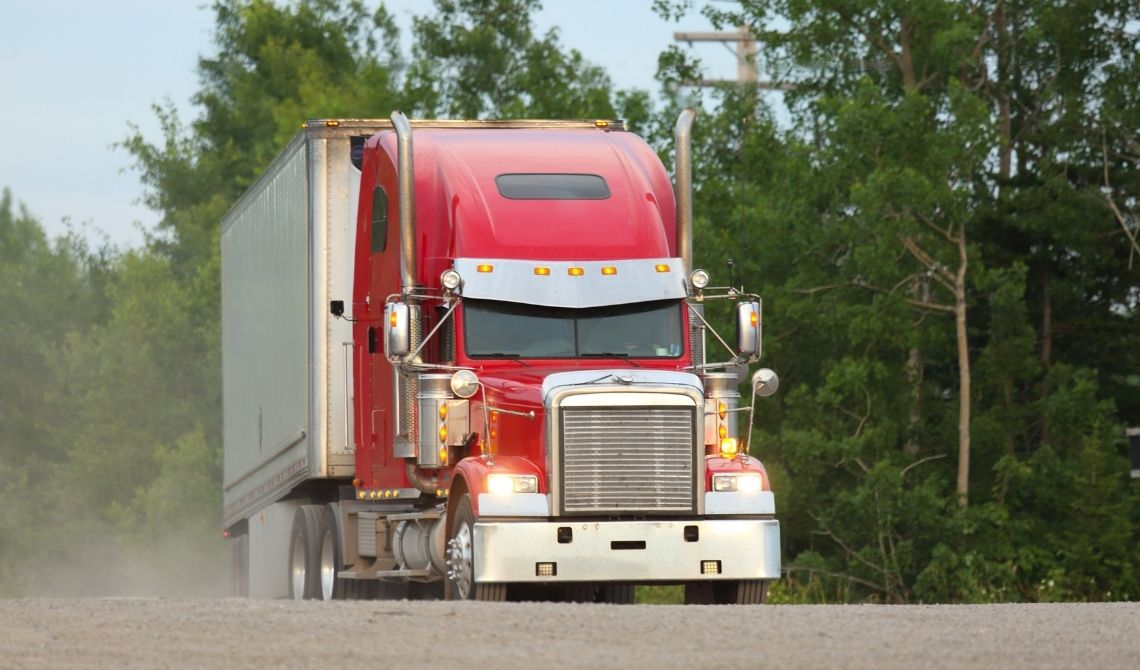Smooth Rides and Heavy Loads Mastering Truck Air Suspension for Efficient Hauling
Introduction to Truck Air Suspension
Truck air suspension is transforming the hauling industry, offering a smoother and more stable ride while maximizing load-bearing capacity. In this chapter, we’ll embark on a journey into the realm of truck air suspension systems, uncovering their fundamental principles and unrivaled benefits for drivers and fleet operators.
Gone are the days of rigid and inflexible suspension setups. With truck air suspension, vehicles can glide over rough terrain and uneven surfaces with unparalleled ease, minimizing driver fatigue and enhancing overall safety. By harnessing the power of compressed air, these systems provide a cushioning effect that absorbs shocks and vibrations, delivering a ride quality akin to luxury vehicles.
Beyond comfort, truck air suspension also boasts impressive load-bearing capabilities. By distributing weight more evenly and effectively, air suspension systems enable trucks to carry heavier loads without compromising stability or performance. This means increased efficiency and productivity for haulers, as well as reduced wear and tear on vehicles over time.
But the benefits of truck air suspension extend far beyond just comfort and capacity. These innovative systems offer versatility and adaptability, allowing drivers to adjust suspension settings on the fly to accommodate changing road conditions and load weights. With the ability to fine-tune their suspension for optimal performance, drivers can navigate challenging terrain with confidence and precision.
In the pages that follow, we’ll delve deeper into the mechanics of truck air suspension, exploring how these systems work and why they’re essential for modern hauling operations. So buckle up and prepare to discover the future of transportation, where smooth rides and heavy loads go hand in hand.
Understanding How Truck Air Suspension Works
To comprehend the marvels of truck air suspension, we must first dissect its intricate workings. At its core, this innovative system relies on a combination of air springs, shock absorbers, and onboard compressors to deliver an unparalleled ride experience.
Air springs, the backbone of the system, replace traditional coil or leaf springs found in conventional suspensions. These flexible rubber bellows are filled with compressed air, serving as the primary means of supporting the vehicle’s weight. When subjected to pressure changes, air springs adjust their height and stiffness accordingly, ensuring optimal ride comfort and load-bearing capacity.
Accompanying the air springs are shock absorbers, which play a crucial role in dampening oscillations and maintaining stability. These hydraulic or pneumatic components work in tandem with the air springs to absorb shocks and vibrations generated by road irregularities, providing a smooth and controlled ride for drivers and passengers alike.
At the heart of the system lies the onboard air compressor, responsible for pressurizing the air springs to the desired level. Equipped with sensors and electronic controls, the compressor continuously monitors and adjusts air pressure based on vehicle dynamics and load conditions. This real-time responsiveness ensures optimal ride quality and handling characteristics under varying circumstances.
Together, these components form a harmonious ensemble, orchestrating a symphony of motion that adapts seamlessly to changing environments. Whether traversing rugged terrain or cruising along smooth highways, truck air suspension systems deliver a ride experience that redefines comfort and performance.
In the next chapter, we’ll delve deeper into the myriad benefits of truck air suspension, exploring how these systems enhance efficiency, safety, and overall driving satisfaction. So buckle up as we continue our journey into the realm of smoother rides and heavier loads.
Benefits of Truck Air Suspension
Embarking on the road to efficiency and comfort, truck air suspension presents a multitude of benefits that redefine the hauling experience. In this chapter, we’ll explore the tangible advantages that these innovative systems offer, ranging from enhanced performance to increased driver satisfaction.
First and foremost, truck air suspension stands as a beacon of efficiency in the transportation landscape. By providing a smoother ride and reducing vibrations, these systems minimize wear and tear on vehicles, resulting in lower maintenance costs and extended lifespan. This translates to improved reliability and uptime for fleet operators, allowing them to maximize productivity and profitability.
Moreover, the superior load-bearing capacity of air suspension enables trucks to carry heavier payloads with ease. By distributing weight more evenly and effectively, these systems enhance stability and control, even when hauling oversized or irregularly shaped cargo. This not only increases the versatility of vehicles but also opens up new opportunities for businesses to expand their operations.
Beyond tangible benefits, truck air suspension also prioritizes driver comfort and satisfaction. By minimizing jolts and bumps, these systems reduce driver fatigue and enhance overall well-being behind the wheel. This not only improves safety on the road but also contributes to a more enjoyable and rewarding driving experience for operators.
Furthermore, truck air suspension systems can be tailored to meet specific needs and preferences, thanks to their customizable settings and adjustable features. Whether optimizing for ride quality, handling characteristics, or load distribution, drivers can fine-tune their suspension to suit their individual requirements, ensuring optimal performance in any situation.
In essence, the benefits of truck air suspension extend far beyond mere convenience. They represent a paradigm shift in the hauling industry, where efficiency, comfort, and performance converge to redefine the standards of transportation excellence. As we journey forward, let’s delve deeper into the transformative power of these innovative systems.
Enhanced Load-Bearing Capacity
In the realm of trucking, the ability to haul heavy loads with confidence is paramount. Enter truck air suspension, a game-changer in the world of load-bearing capabilities. In this chapter, we’ll explore how these innovative systems enable vehicles to carry more weight while maintaining stability and performance.
Traditional suspension setups often struggle to accommodate heavy payloads, leading to compromised handling and increased wear on vehicle components. However, truck air suspension systems are designed to tackle this challenge head-on. By harnessing the power of compressed air, these systems distribute weight more evenly across the vehicle, reducing strain on individual components and enhancing overall stability.
One of the key features of air suspension is its dynamic adjustability. Unlike static suspension setups, which rely on fixed springs and dampers, air suspension systems can adapt to changing load conditions in real time. This means that as the weight of the cargo shifts during transit, the suspension automatically adjusts to maintain optimal ride height and stability.
The benefits of enhanced load-bearing capacity extend beyond just increased efficiency. By allowing trucks to carry heavier payloads, air suspension systems enable businesses to maximize their shipping volumes and minimize transportation costs. This opens up new opportunities for growth and expansion, as companies can deliver more goods in fewer trips, thereby increasing their competitiveness in the market.
Moreover, the improved stability and control offered by air suspension systems enhance safety on the road, reducing the risk of accidents and injuries associated with overloaded vehicles. This not only protects drivers and other road users but also helps businesses avoid costly liabilities and reputational damage.
In summary, enhanced load-bearing capacity is a cornerstone of truck air suspension, offering a host of benefits for drivers, fleet operators, and businesses alike. As we continue our exploration of these innovative systems, let’s delve deeper into their transformative potential in the world of transportation.
Improved Ride Quality
Smooth travels are not just a luxury; they are a necessity in the demanding world of trucking. In this chapter, we’ll uncover how truck air suspension systems revolutionize the ride experience, delivering unparalleled comfort and stability for drivers and passengers.
Truck air suspension is engineered to cushion the journey, mitigating the impact of bumps, potholes, and other road irregularities. By replacing traditional coil or leaf springs with air springs filled with compressed air, these systems provide a more forgiving ride that minimizes jolts and vibrations. The result? A smoother and more enjoyable journey for everyone on board.
Beyond mere comfort, improved ride quality translates to tangible benefits for drivers and fleet operators. By reducing the strain and fatigue associated with rough rides, air suspension systems help drivers stay alert and focused behind the wheel, improving safety on the road. This not only protects valuable cargo but also enhances overall operational efficiency.
Moreover, the superior ride quality offered by air suspension systems contributes to increased driver satisfaction and retention. Happy drivers are more productive, more engaged, and more likely to stay with their employers for the long haul. By prioritizing driver comfort and well-being, businesses can cultivate a positive work environment and attract top talent to their fleets.
But the benefits of improved ride quality extend beyond just driver satisfaction. They also impact the bottom line, as smoother rides translate to reduced maintenance costs and extended vehicle lifespan. By minimizing wear and tear on vehicle components, air suspension systems help businesses save money in the long run, maximizing their return on investment.
In summary, improved ride quality is a hallmark of truck air suspension, offering a host of benefits for drivers, fleet operators, and businesses alike. As we delve deeper into the transformative potential of these innovative systems, let’s continue to explore the myriad ways in which they enhance the world of transportation.
Versatility and Adaptability
In the ever-changing landscape of trucking, adaptability is key to success. Enter truck air suspension, a versatile solution that adjusts seamlessly to varying road conditions and load weights. In this chapter, we’ll delve into the flexibility and adaptability of these innovative systems, exploring how they empower drivers to tackle challenges with confidence.
Truck air suspension systems are designed to be highly adaptable, capable of adjusting to a wide range of load weights and cargo types. Unlike rigid suspension setups, which may struggle to accommodate fluctuating payloads, air suspension systems can be fine-tuned on the fly to maintain optimal ride height and stability. This means that whether hauling a full load or running empty, drivers can count on their suspension to deliver consistent performance and control.
Moreover, the versatility of air suspension extends beyond just load adjustments. These systems can also be customized to suit different driving conditions and preferences. From highway cruising to off-road adventures, drivers can adjust suspension settings to optimize ride quality, handling characteristics, and fuel efficiency. This adaptability ensures a smooth and comfortable ride in any situation, enhancing driver confidence and satisfaction.
But perhaps the greatest advantage of air suspension’s versatility lies in its ability to improve safety on the road. By adapting to changing road conditions and load weights, these systems help drivers maintain control and stability, reducing the risk of accidents and injuries. This not only protects valuable cargo but also safeguards drivers and other road users, enhancing overall road safety.
In summary, versatility and adaptability are hallmarks of truck air suspension, offering drivers a flexible solution for tackling the challenges of modern trucking. As we continue our exploration of these innovative systems, let’s delve deeper into their transformative potential in the world of transportation.
Maintenance and Care Tips
Just like any other component of a vehicle, truck air suspension systems require regular maintenance to ensure optimal performance and longevity. In this chapter, we’ll delve into essential maintenance and care tips that will help drivers and fleet operators keep their air suspension systems in top condition.
Regular inspection is the first line of defense in maintaining truck air suspension systems. Drivers should visually inspect air springs, shock absorbers, and other components for signs of wear, damage, or leaks. Any abnormalities should be addressed promptly to prevent further issues down the road.
Additionally, it’s crucial to keep air suspension components clean and free from debris. Dirt, mud, and other contaminants can compromise the integrity of the system and hinder its performance. Regular cleaning with mild soap and water can help prevent buildup and ensure smooth operation.
Furthermore, drivers should adhere to recommended maintenance schedules provided by manufacturers. This may include lubricating moving parts, checking air pressure levels, and inspecting electronic components for proper functioning. Following these guidelines can help identify potential issues early on and prevent costly repairs or replacements.
Another important aspect of air suspension maintenance is ensuring proper alignment and balancing of the system. Misaligned or unbalanced suspension components can lead to uneven tire wear, reduced fuel efficiency, and compromised handling. Regular wheel alignments and balancing can help maintain stability and prolong the life of the suspension system.
Finally, drivers should be mindful of how they drive and load their vehicles. Avoiding harsh braking, acceleration, and cornering can help minimize stress on the suspension system and prevent premature wear. Additionally, distributing weight evenly and within recommended limits can help maintain stability and prevent overloading.
By following these maintenance and care tips, drivers and fleet operators can ensure their truck air suspension systems remain in optimal condition, providing a smooth and reliable ride for years to come. As we conclude our exploration of these innovative systems, let’s remember the importance of proactive maintenance in maximizing efficiency and safety on the road.
Conclusion
As we reach the end of our journey through the realm of truck air suspension, it’s clear that these innovative systems are more than just a technological advancement—they’re a game-changer for the transportation industry. From enhanced ride quality to increased load-bearing capacity, the benefits of air suspension are undeniable.
Throughout this exploration, we’ve uncovered how truck air suspension systems work, their numerous advantages, and essential maintenance tips for ensuring their longevity and performance. We’ve learned how these systems revolutionize the hauling experience, delivering smoother rides, greater efficiency, and improved safety on the road.
But beyond the technicalities, it’s important to recognize the broader impact of truck air suspension on the industry as a whole. These systems aren’t just improving individual vehicles; they’re reshaping the way we think about transportation, opening up new possibilities for efficiency, sustainability, and innovation.
As we look to the future, it’s clear that truck air suspension will continue to play a pivotal role in shaping the landscape of modern trucking. Whether you’re a driver, fleet operator, or industry stakeholder, embracing these innovative systems is key to staying ahead in an ever-evolving world.
So as you embark on your own journey with truck air suspension, remember the lessons learned here. Prioritize maintenance, embrace adaptability, and reap the rewards of smoother rides and heavier loads. Together, we can pave the way towards a brighter, more efficient future for transportation.
For detailed information, you can contact us at Truck Air Suspension


